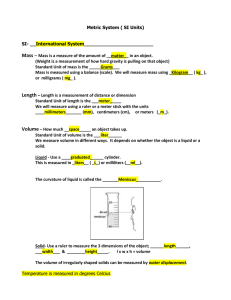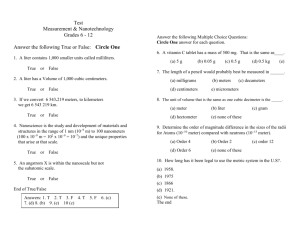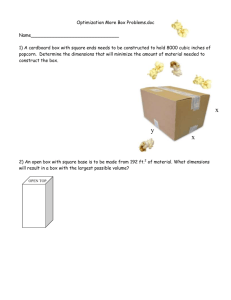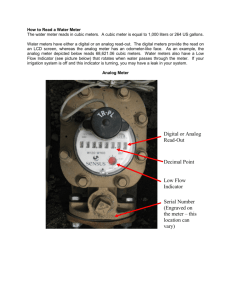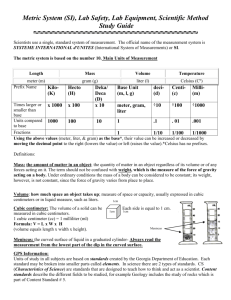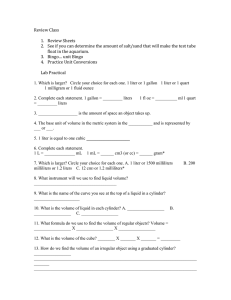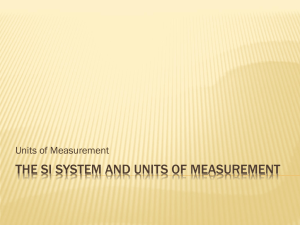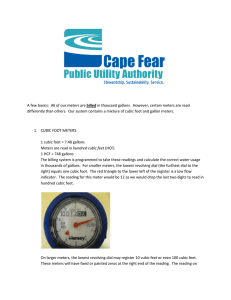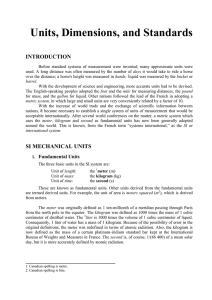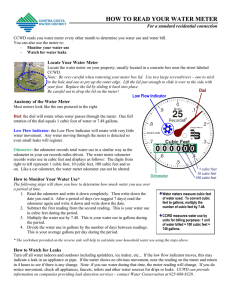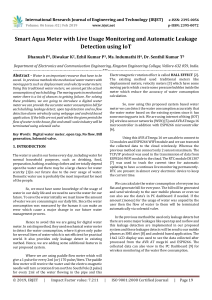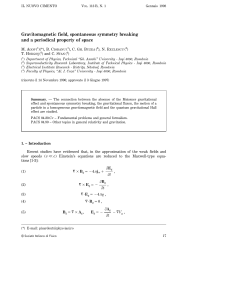Measurement
advertisement
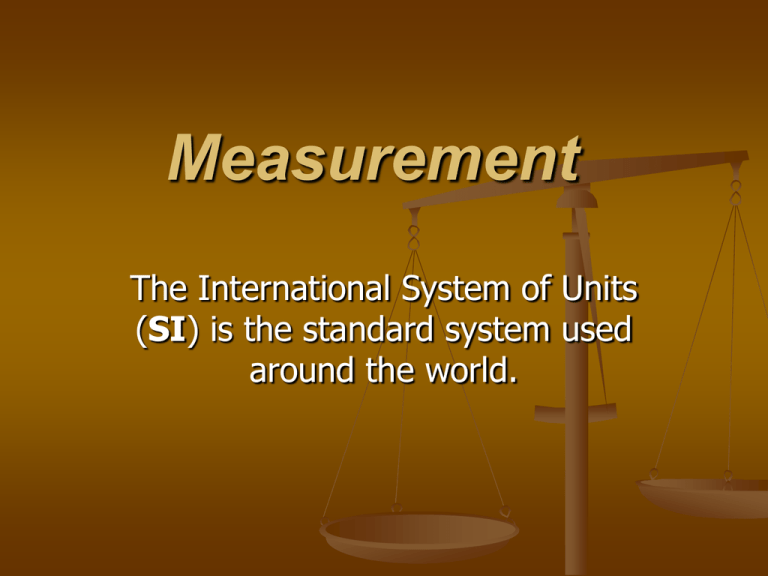
Measurement The International System of Units (SI) is the standard system used around the world. Length The standard SI unit to measure length is the meter (m). The meter is divided into 100 equal parts called centimeters (cm). The centimeter is divided into 10 equal parts called millimeters (mm). Long distances are measured in kilometers (km) which is 1,000 m. Mass Mass is the amount of matter that something is made of. The kilogram is the SI unit to measure mass. Mass is measured with a triple balance beam. Unlike weight, mass does not change with an object’s position. Weight Weight is a measurement of the gravitational force on an object. The SI unit for force is the Newton (N). Since weight is a measure of gravitational force, it does matter where you are. There is 6 times less gravitational force on the moon, so you would weight 6 times less there. Use spring scales to measure weight. Density Density is mass per unit volume. Density is the amount of matter it has in a given space. To find density (D), first measure the mass (m) and volume (V), then divide mass by volume. Density is an SI derived unit (mass and volume) Volume Volume is the amount of space that something occupies. Volumes of liquids are expressed as liters (L). Graduated cylinders are used to measure liquid volume, and also to find the volume of a small odd shaped object. (see meniscus) Volumes of solid objects are expressed in cubic meters (cm3) Measurement Area and Volume Area is the amount of surface included within a set of boundaries and is expressed in square such as square 2 meters (m ). The amount of space occupied by an object is the object’s volume. The basic SI unit of volume for a solid object is the cubic meter (m3). SI measurements for liquid volumes are in milliliters (mL) or liters (L). Temperature Temperature is a measure of the average kinetic energy of the particles in an object. Temperature is not determined by how much of the substance you have. The SI unit for temperature is Kelvin (K), however the Celsius (C) scale is most commonly used.

